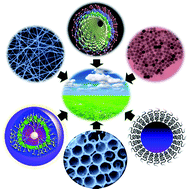
Scientists in Korea have made a flexible hybrid plastic film, embedded with silver nanowires, which can be used as an electrode for flexible solar cells.
Silver nanowires were embedded in the surface of a glass-fabric reinforced transparent composite film to form a substrate with excellent opto-electrical properties, mechanical flexibility and, unlike typical plastic substrates, good thermal stability. An inverted polymer solar cell with an efficiency of 5.9% was made based on these hybrid electrodes, comparable to the efficiency of the more conventional devices based on indium tin oxide/glass.
Read this HOT article today:
High-performance hybrid plastic films: a robust electrode platform for thin-film optoelectronics
Jungho Jin, Jaemin Lee, Seonju Jeong, SeungCheol Yang, Ji-Hoon Ko, Hyeon-Gyun Im, Se-Woong Baek, Jung-Yong Lee and Byeong-Soo Bae
DOI: 10.1039/C3EE24306K











 Scientists in South Korea have made a conducting polymer as part of a thin-film thermoelectric device that can generate electricity from the temperature difference between your fingertips and the environment.
Scientists in South Korea have made a conducting polymer as part of a thin-film thermoelectric device that can generate electricity from the temperature difference between your fingertips and the environment.





